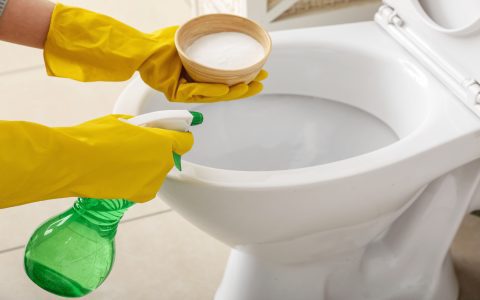Preparation for Mold Removal
Shower mold thrives in damp, dark, and poorly ventilated environments. Before starting, prioritize safety.
Safety Precautions:
- Ensure adequate ventilation: open windows and use an exhaust fan.
- Wear protective gear: non-porous gloves, an N95 respirator or a suitable mask, and eye protection.
Effective Mold Removal Solutions & Application
Select a cleaning agent appropriate for your shower surfaces and the extent of mold growth.

-
Commercial Mold Removers:
These are specifically formulated to kill mold. Always follow the manufacturer's instructions for application and safety.
-
Distilled White Vinegar:
Spray undiluted vinegar directly onto the mold. Allow it to sit for at least one hour. Scrub the area with a stiff brush, then rinse thoroughly with water. Vinegar is effective due to its acidity.
-
Baking Soda:

Create a paste by mixing baking soda with a small amount of water. Apply the paste to the moldy surfaces, let it sit for 15-20 minutes, then scrub with a brush and rinse. Baking soda is a mild abrasive and deodorizer.
-
Hydrogen Peroxide (3% solution):
Pour or spray 3% hydrogen peroxide directly onto the mold. Let it sit for 10-15 minutes. Scrub the area to remove mold and stains, then rinse. Test on an inconspicuous area first, as it can have a mild bleaching effect.
-
Bleach Solution (Use with Extreme Caution):
For non-porous surfaces like tile and grout, a bleach solution (1 part bleach to 10 parts water) can be effective. Apply, wait 10-15 minutes, scrub, and rinse thoroughly. Crucially, never mix bleach with ammonia or any other cleaning products, especially acidic ones like vinegar, as this creates toxic gas. Ensure ample ventilation. Test on a small, hidden area first, as bleach can discolor or damage some materials.
Systematic Cleaning Process
- Application: Generously apply your chosen cleaning solution to all mold-affected surfaces.
- Dwell Time: Let the solution sit for the recommended duration (varies from 10 minutes to an hour) to effectively kill the mold and loosen its grip.
- Scrubbing: Use a stiff-bristled brush, an old toothbrush for grout lines, or a non-scratch scouring pad to vigorously scrub away the mold. For persistent mold, reapply the cleaner and scrub again.
- Rinsing: Thoroughly rinse all cleaned surfaces with fresh water to remove mold residue and cleaning solution.
- Drying: Completely dry the shower area using a towel, a squeegee, or by maximizing air circulation. This is critical to inhibit immediate mold regrowth.
Preventing Future Mold Growth in Your Shower
- Improve Ventilation: Always use an exhaust fan during and for at least 30 minutes after showering. If an exhaust fan is unavailable, open a window.
- Dry Surfaces Post-Shower: Use a squeegee or towel to wipe down shower walls, doors, and the floor after each use.
- Regular Cleaning Schedule: Clean your shower at least once a week with a bathroom cleaner, even if mold is not visible, to prevent spores from establishing.
- Control Bathroom Humidity: If your bathroom is consistently damp, consider using a dehumidifier.
- Address Leaks Promptly: Repair any leaking faucets, showerheads, or pipes immediately, as excess moisture encourages mold.
- Use Mold-Resistant Products: When replacing shower curtains, liners, or repainting, choose mold-resistant options.










